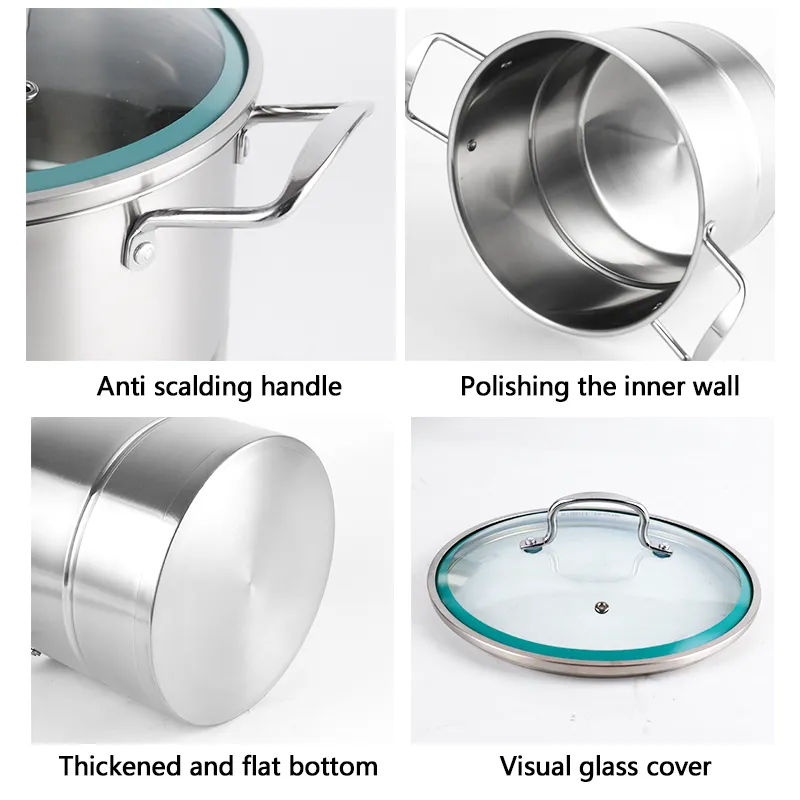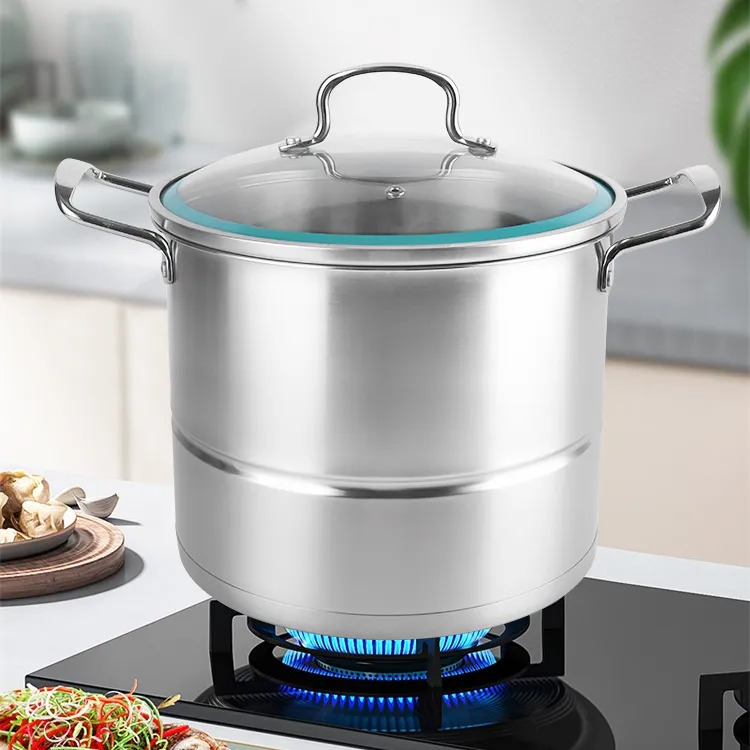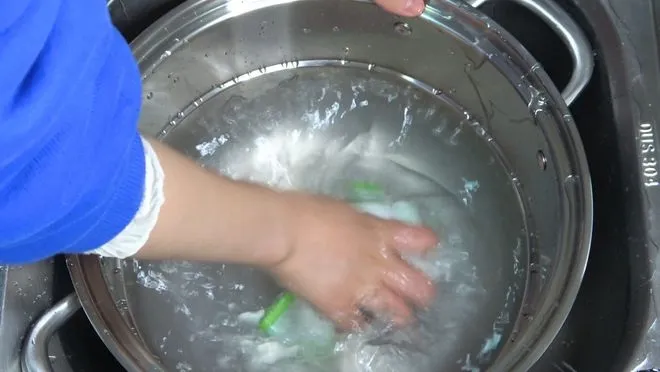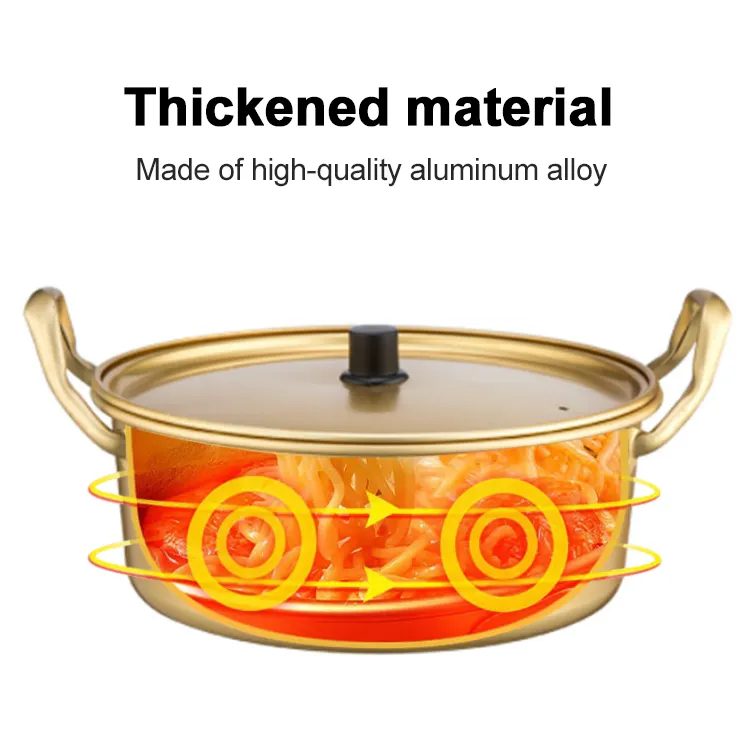
다음은 사용 방법에 대한 가이드입니다. 스테인리스 스틸 조리기구 더 나은 요리 경험을 위해. 전문 요리사든 이제 막 요리를 시작한 초보자든 올바른 조리도구를 선택하면 요리의 질이 크게 향상됩니다. 일반적으로 스테인리스 스틸은 오래가고, 반응하지 않으며, 세척하기 쉬운 소재로 생각하지만, 올니스는 스테인리스 조리기구를 만드는 데 있어 좋은 평판을 얻고 있습니다. 이 글에서는 스테인리스 스틸의 사용과 관리에 대해 자세히 설명하여 스테인리스 스틸이 주방에서 시간이 지남에 따라 어떻게 신뢰할 수 있는 도구가 되고 요리를 효과적으로 만드는지 보여드리겠습니다. 읽은 후 구매를 원하시는 분들을 위해 스테인리스 스틸 조리기구는 다음과 같습니다. Allnice 를 사용하는 것도 좋은 선택이 될 수 있습니다.
스테인리스 스틸 조리기구 선택하기
스테인리스 스틸 조리기구 은 다용도로 사용할 수 있고 특히 내구성이 뛰어나 가정과 전문 주방 모두에서 가장 먼저 선택하는 제품입니다. 스테인리스 스틸로 만든 냄비와 프라이팬을 사용하면 얻을 수 있는 몇 가지 주요 이점은 다음과 같습니다:
- 내구성과 수명: 스테인리스 스틸은 강도가 강하고 녹이 잘 슬지 않는 것으로 유명합니다. 제대로 관리하면 수년 동안 사용할 수 있습니다.
- 스테인리스 스틸은 반응성이 없습니다: 산성 또는 알칼리성 식품과 반응하는 알루미늄이나 구리 금속처럼 작용하지 않아 식품의 안전과 풍미를 유지합니다.
- 열 분배 및 유지: 스테인리스 스틸은 열전도율이 가장 좋지 않지만 대부분의 냄비는 바닥이 알루미늄 또는 구리 합성물로 만들어져 있습니다. 이렇게 하면 열이 더 고르게 분산되어 국부적인 과열을 방지하고 요리가 고르지 않게 되는 것을 방지할 수 있습니다. 이는 보다 일관된 요리 효과로 이어집니다.
- 청소와 유지 관리가 간편합니다: 스테인리스 스틸은 표면이 매끄럽고 일반적으로 물이나 얼룩을 흡수하지 않아 청소가 쉽습니다. 또한 일반적으로 냄새를 흡수하지 않습니다. 스테인리스 스틸로 만든 대부분의 조리기구는 식기세척기 사용에도 안전하므로 수동 세척에 드는 시간과 수고를 줄여줍니다.
- 미학: 스테인리스 스틸의 깔끔하고 모던한 외관은 미니멀한 디자인이든 전통적인 디자인 스타일이든 모든 주방에 우아한 느낌을 선사합니다.

스테인리스 스틸 조리기구 준비하기
스테인리스 스틸 조리기구를 처음 사용하기 전에 적절한 취급이 이루어져야 최적의 성능을 발휘하고 수명이 길어집니다. 다음은 중요한 단계와 고려해야 할 사항입니다:
제조 잔여물 제거
새 스테인리스 스틸 조리기구는 공장 출고 시 표면에 약간의 기름과 먼지, 광택제가 묻어 있을 수 있습니다. 그렇기 때문에 처음 사용하기 전에 잘 세척해야 합니다. 내부와 외부를 중성 비누로 따뜻한 물로 씻어야 합니다. 손잡이와 팬 바닥을 포함한 모든 부품은 약품이 남지 않도록 꼼꼼하게 닦아야 합니다.
단계:
- 조리기구에 따뜻한 물을 붓고 순한 주방 세제를 몇 방울 떨어뜨려야 합니다.
- 부드러운 스펀지나 천으로 조리기구 표면을 완전히 문질러 주세요.
- 물로 잘 헹군 후 부드러운 천으로 완전히 말리세요.
- 스크래치 등 손상 여부 검사
조리기구 양념하기
스테인리스 스틸은 주물처럼 '양념'을 하지 않더라도 가벼운 전처리를 하면 조리 중에 음식이 팬 바닥에 눌어붙는 것을 방지할 수 있습니다. 표면에 얇은 오일 코팅이 형성되어 눌어붙지 않는 기능이 향상됩니다. 조리 중 웍이나 프라이팬에서 음식이 눌어붙는 것을 방지하는 데 유용합니다.
단계:
- 가스레인지 위에 올려놓고 중약불에서 몇 분간 기다립니다.
- 팬이 가열되면 올리브나 카놀라와 같은 오일을 어느 정도 추가해야 합니다.
- 팬 표면의 대부분을 고르게 덮을 수 있도록 기름을 이동시켜야 합니다.
- 팬을 식힌 후 불을 끄고 여분의 기름을 닦아내세요.
부드러운 열 사용

스테인리스 스틸 팬을 처음 사용하는 경우 열을 올바르게 관리하는 것이 중요합니다. 스테인리스 스틸은 열이 빠르게 퍼지기 때문에 과열되면 음식이 눌어붙거나 팬 자체가 열로 인해 색이 변할 수 있습니다. 중약불에서 시작하면 열이 팬에 더 고르게 전달되므로 중약불에서 시작하는 것이 좋습니다.
단계:
- 조리 도구는 재료를 넣기 전에 1~2분 정도 예열해야 합니다.
- 하지만 재료가 없는 팬을 장시간 불 위에 올려두면 스테인리스 스틸 표면이 너무 뜨거워져 영구적인 자국이 생길 수 있으므로 주의하세요.
가혹한 도구 사용 금지
스테인리스 스틸 조리기구 표면은 튼튼하지만 금속 조리기구를 사용하면 긁힘이 발생할 수 있으므로 주의해야 합니다. 처음 사용하는 경우에는 실리콘 재질의 나무나 나일론 재질의 도구를 사용하는 것이 냄비의 광택과 아름다움을 유지하는 데 더 좋을 수 있습니다. 금속은 외관을 해칠 수 있는 스크래치가 발생할 수 있습니다.
이러한 방법을 따르면 스테인리스 스틸 조리기구는 처음부터 좋은 상태를 유지할 수 있으며 대부분의 일반적인 문제를 피할 수 있습니다. 음식물 눌어붙음, 변색, 긁힘과 같은 일반적인 문제는 주의를 기울이면 발생할 가능성이 줄어듭니다.
스테인리스 스틸 조리기구로 요리하는 방법
스테인리스 스틸 조리도구는 가장 다재다능한 냄비와 프라이팬 중 하나이지만, 최적의 성능을 발휘하기 위해 알아야 할 몇 가지 핵심 사항이 있습니다. 스테인리스 스틸 조리기구 사용법을 익히고, 음식이 눌어붙는 것을 방지하며, 고르게 조리하고, 전체 조리 과정을 훨씬 쉽게 만드는 데 도움이 되는 몇 가지 실용적인 스테인리스 스틸 조리기구 요리 팁을 소개합니다.
조리기구 예열하기
팬이나 조리기구를 먼저 예열한 후 중간 불에서 1~2분간 조리하면 바닥에 음식이 눌어붙는 열점을 방지할 수 있습니다.
예열이 완료된 후 권장량의 오일이나 쿠킹 스프레이를 추가합니다.
적절한 조리 온도 사용
스테인리스 스틸 조리기구는 열 전달 특성이 좋지만 온도가 너무 높으면 음식이 타거나 냄비와 프라이팬이 변형될 수 있습니다. 따라서 요리에 따라 불을 적절히 조절해 주세요.
예를 들어, 중간 센 불로 볶고 중간 약한 불로 끓입니다.
음식물이 달라붙는 것을 방지하려면 조리기구
- 적절한 양의 기름을 발라야 합니다: 팬을 예열하고 충분한 양의 기름이나 쿠킹 스프레이를 추가하여 기름이 팬 바닥을 얇게 코팅하고 음식이 팬에 눌어붙지 않도록 합니다. 또는 녹인 버터나 식물성 기름을 몇 방울 떨어뜨려도 똑같이 좋은 효과를 얻을 수 있습니다.
- 음식을 너무 자주 끄지 마세요: 음식을 팬에 넣자마자 바로 뒤집어서는 안 됩니다. 음식이 팬 바닥에 단 몇 초 동안만 놓아두어 자연스럽게 풀어지도록 하세요. 이렇게 하면 멋진 황금빛 갈색 캐러멜 윗층이 만들어지고 음식이 눌어붙는 것을 방지할 수 있습니다. 주걱으로 살짝 밀어서 음식이 쉽게 움직이면 뒤집어도 좋습니다.
- 올바른 재료를 사용하세요: 달걀이나 생선과 같은 일부 재료는 팬 바닥에 눌어붙기 쉽습니다. 이러한 재료를 사용하는 경우, 넌스틱 팬을 선택하거나 가열하기 전에 스테인리스 팬에 소량의 기름을 발라 문지르면 됩니다.

적절한 도구 사용
스테인리스 냄비와 프라이팬의 표면이 긁히지 않게 하려면 나무, 실리콘 또는 나일론 소재의 주방 도구만 사용하는 것이 좋습니다. 이렇게 하면 음식물이 바닥에 달라붙었을 때 금속 도구를 사용하여 냄비와 프라이팬 바닥을 긁어내는 것을 피할 수 있어 표면을 보호하고 냄비와 프라이팬의 수명을 연장할 수 있습니다.
스테인리스 스틸 조리기구 세척 및 관리
올바른 세척 및 관리 방법은 스테인리스 스틸 조리기구의 마감을 좋은 상태로 유지할 뿐만 아니라 스테인리스 스틸 조리기구를 보호합니다. 이제 스테인리스 스틸 주방용품을 위한 가장 중요한 세척 및 관리 팁을 소개합니다:
따뜻한 물과 주방 세제로 세척


매일 요리를 한 후에는 냄비와 프라이팬을 즉시 세척해야 음식 찌꺼기가 냄비 바닥에 오래 남아서 세척이 훨씬 더 어려워지지 않습니다. 전반적으로 스테인리스 스틸 냄비와 프라이팬은 따뜻한 물과 중성 세제만 있으면 세척할 수 있습니다.
단계:
- 조리기구에 달라붙은 음식물을 따뜻한 물에 몇 분간 담가두세요.
- 스펀지나 부드러운 천에 주방 세제를 몇 방울 떨어뜨린 후 안팎을 가볍게 닦아줍니다.
- 흐르는 물에 조리기구를 헹굽니다.
- 스테인리스 스틸 표면에 물이 묻지 않도록 부드러운 천이나 타월로 특히 바닥과 측면을 닦아 말리세요.
까다로운 음식물 찌꺼기 처리
아무리 주의를 기울여도 잘 지워지지 않는 음식물 찌꺼기가 팬 바닥에 달라붙는 것은 피할 수 없습니다. 딱딱한 세척 도구로 바닥을 직접 긁으면 스테인리스 스틸 표면에 긁힘이 생길 수 있습니다. 대신 잘 지워지지 않는 얼룩은 세정제를 담그거나 사용하여 제거하세요.
단계:
- 조리기구를 따뜻한 물에 10~15분간 담가 잘 지워지지 않는 음식물 찌꺼기를 풀어 세척하세요,
- 그래도 잘 지워지지 않는 얼룩은 조리기구를 다시 스토브에 올려놓고 물을 채우고 베이킹소다를 소량 넣은 다음 약한 불에서 몇 분간 가열하면 잘 닦입니다.
장기적인 유지 관리를 통한 최적의 결과
정기적인 폴리싱 및 유지 관리
스테인리스 스틸 조리기구는 적절하게 세척하더라도 시간이 지나면 원래의 광택을 잃을 수 있습니다. 정기적으로 광택을 내면 스테인리스 스틸 표면이 산화되거나 부식되지 않도록 보호하면서 광택을 되찾을 수 있습니다.
보관 팁:
- 냄비와 프라이팬은 습한 환경으로 인해 녹이 슬지 않도록 건조하고 통풍이 잘 되는 곳에 보관하세요.
- 냄비 홀더나 냄비 커버를 사용하면 냄비와 프라이팬이 서로 부딪혀 흠집이 생기는 것을 방지할 수 있습니다.
변색 및 손상을 방지하는 방법 스테인리스 스틸 조리기구
스테인리스 스틸 조리기구는 튼튼하고 부식에 강하며 인기가 많지만, 잘 사용하지 않으면 변색, 긁힘 및 기타 형태의 손상이 발생할 수 있습니다. 적절한 보호 조치와 세척 방법을 사용하면 변색을 방지하고 스테인리스 스틸 조리기구를 새것처럼 오랫동안 사용할 수 있습니다. 다음은 스테인리스 스틸 조리기구의 변색과 손상을 방지하는 몇 가지 유용한 팁입니다:
극심한 고온을 피하세요
스테인리스 스틸은 열에 매우 잘 견디지만, 매우 높은 온도에서는 표면이 타서 파란색 또는 무지개 빛깔의 자국이 남을 수 있습니다. 이는 일반적으로 스테인리스 스틸의 크롬이 매우 높은 온도에서 산화되기 때문입니다.
예방 조치:
- 레시피에 더 많은 열이 필요하지 않는 한 모든 경우에 약불에서 중불로 조리할 것을 권장합니다.
- 고열을 가해야 하는 경우, 조리기구의 안쪽을 기름이나 액체로 채워야 온도가 순간적으로 치솟지 않으니 주의하세요.

정기적으로 열점 및 물 얼룩 제거하기
열점 및 물 얼룩 - 스테인리스 스틸 조리기구를 사용할 때 흔히 발생하는 문제입니다. 일반적으로 고르지 않은 가열이나 물에 미네랄이 침착되어 발생합니다. 이러한 자국은 조리기구의 전체적인 외관을 해칠 뿐만 아니라 표면도 손상시킬 수 있습니다.
삭제하는 방법:
- 변색된 부분이나 물 얼룩은 백 식초로 문지른 후 부드러운 천으로 닦아내면 됩니다.
산성 식품을 대량으로 보관하지 마세요.
산성 식품에는 스테인리스 스틸과 약간의 화학 반응을 일으키는 토마토, 식초 또는 감귤류가 포함됩니다. 장시간 노출되면 표면이 부식되거나 변색될 수 있습니다. 따라서 산성 식품은 스테인리스 스틸 조리기구에 오래 보관하지 마세요.
주의:
- 산이 함유된 식재료를 스테인리스 조리기구에 장시간 방치하지 않도록 주의하고 조리 후에는 즉시 조리기구를 세척하세요.
스테인리스 스틸 조리기구를 사용해 보세요.

모든 독자에게 스테인리스 스틸을 사용해 볼 것을 권장합니다. 조리기구 의 편리함과 효율성을 경험해보세요. 적절한 사용법과 관리로 요리 경험뿐만 아니라 조리기구를 오랫동안 최상의 상태로 유지할 수 있습니다. 스테인리스 스틸 조리기구에 투자하는 것은 건강하고 풍미 있는 라이프스타일을 위한 중요한 단계이므로, 다음과 같은 제품을 추천합니다. 올니스 쿡웨어! 문의를 환영합니다!








